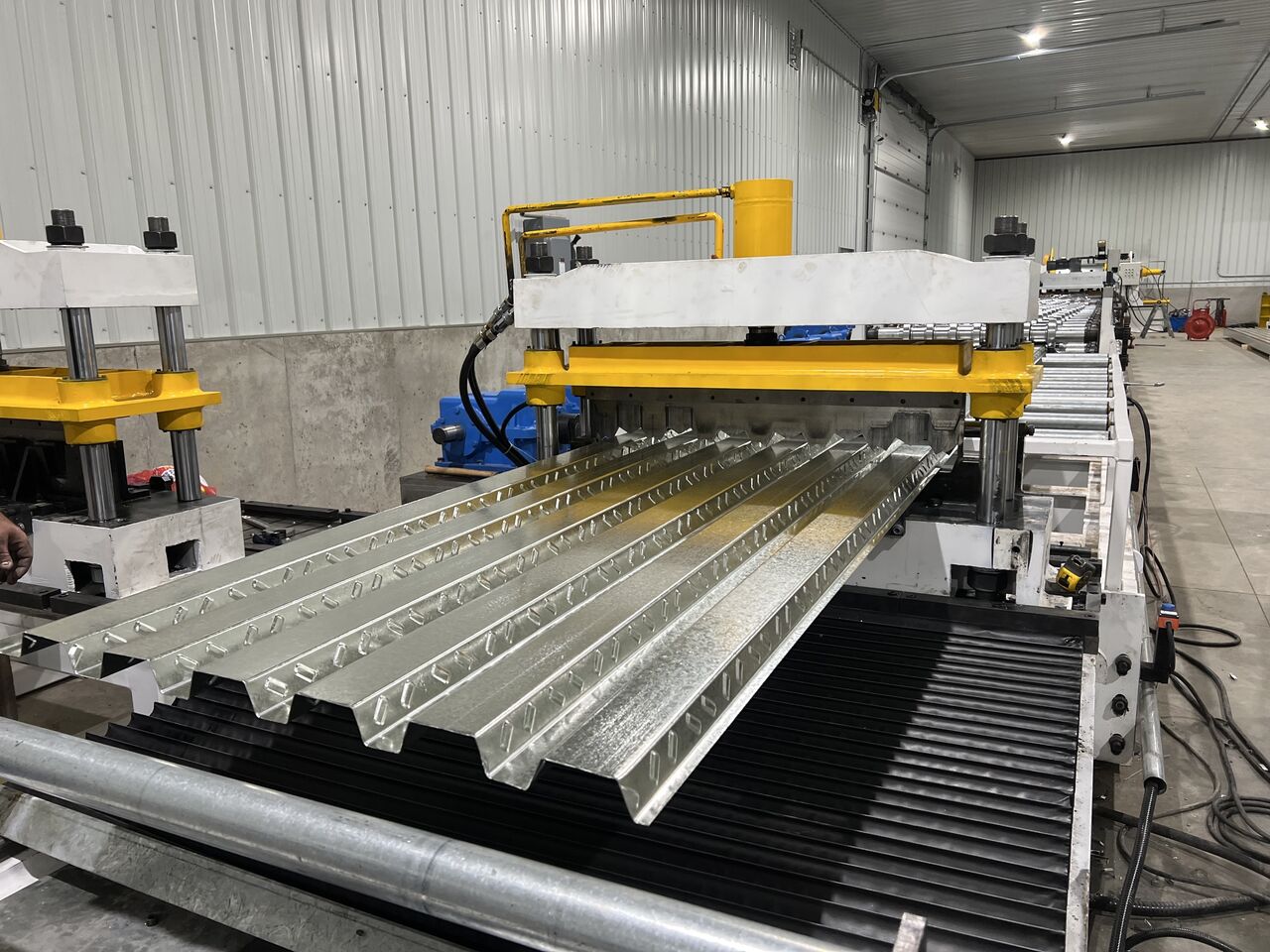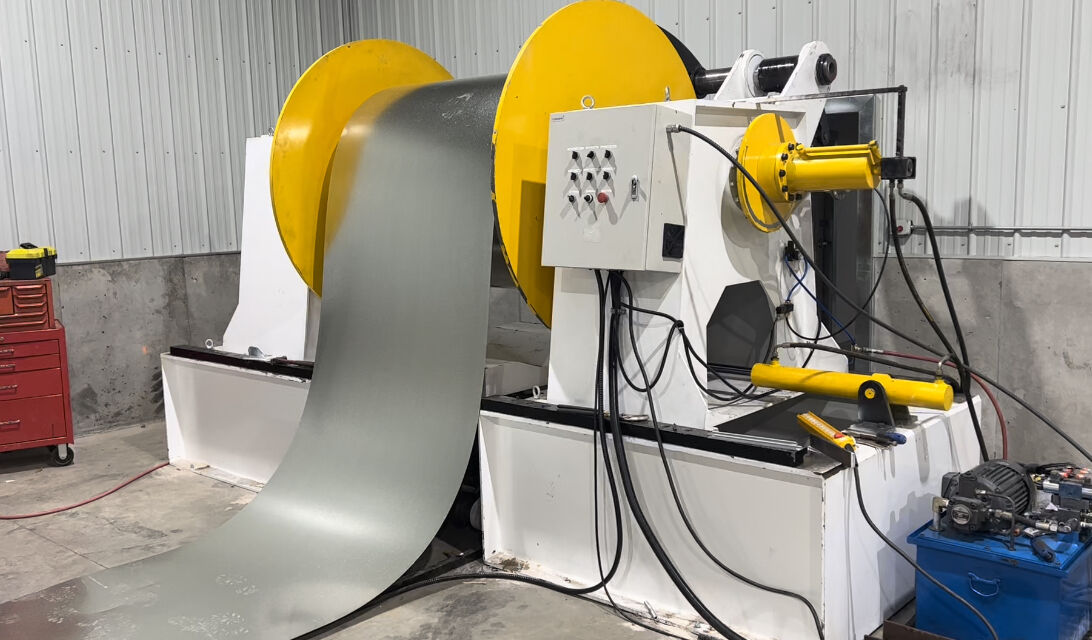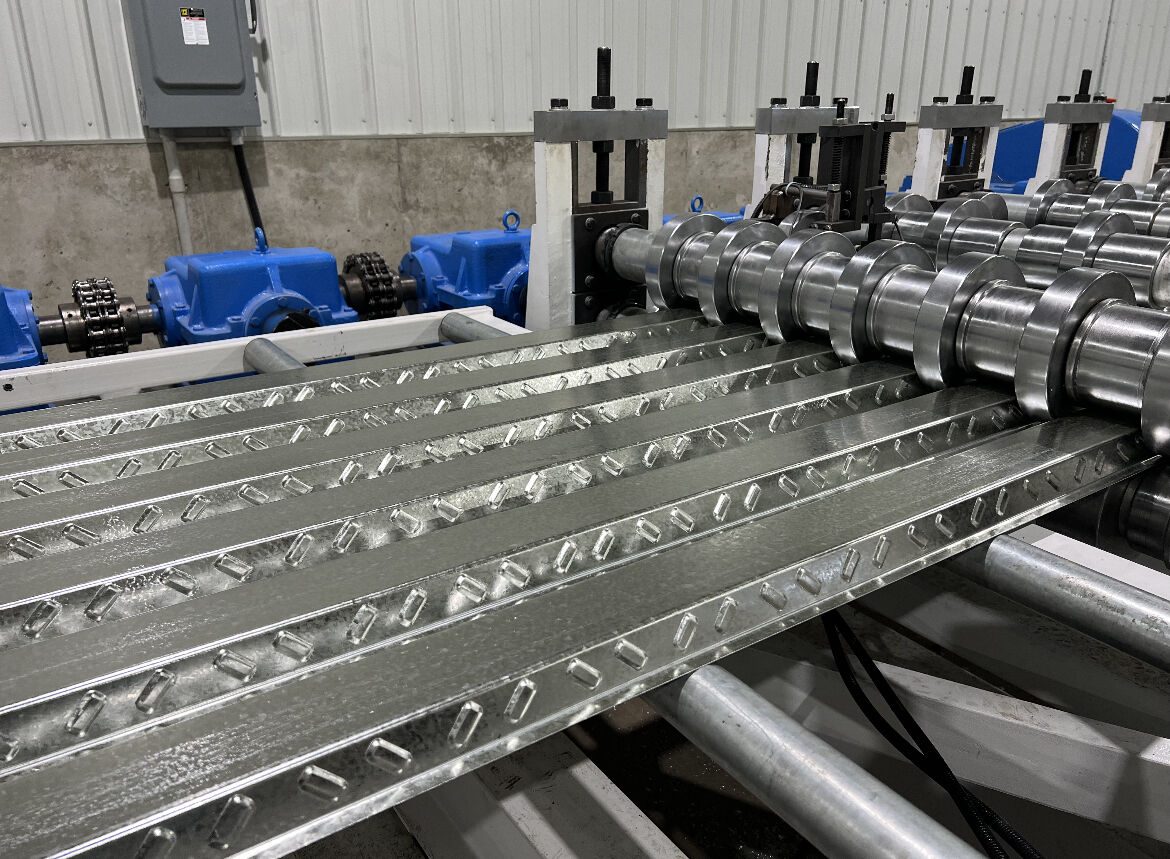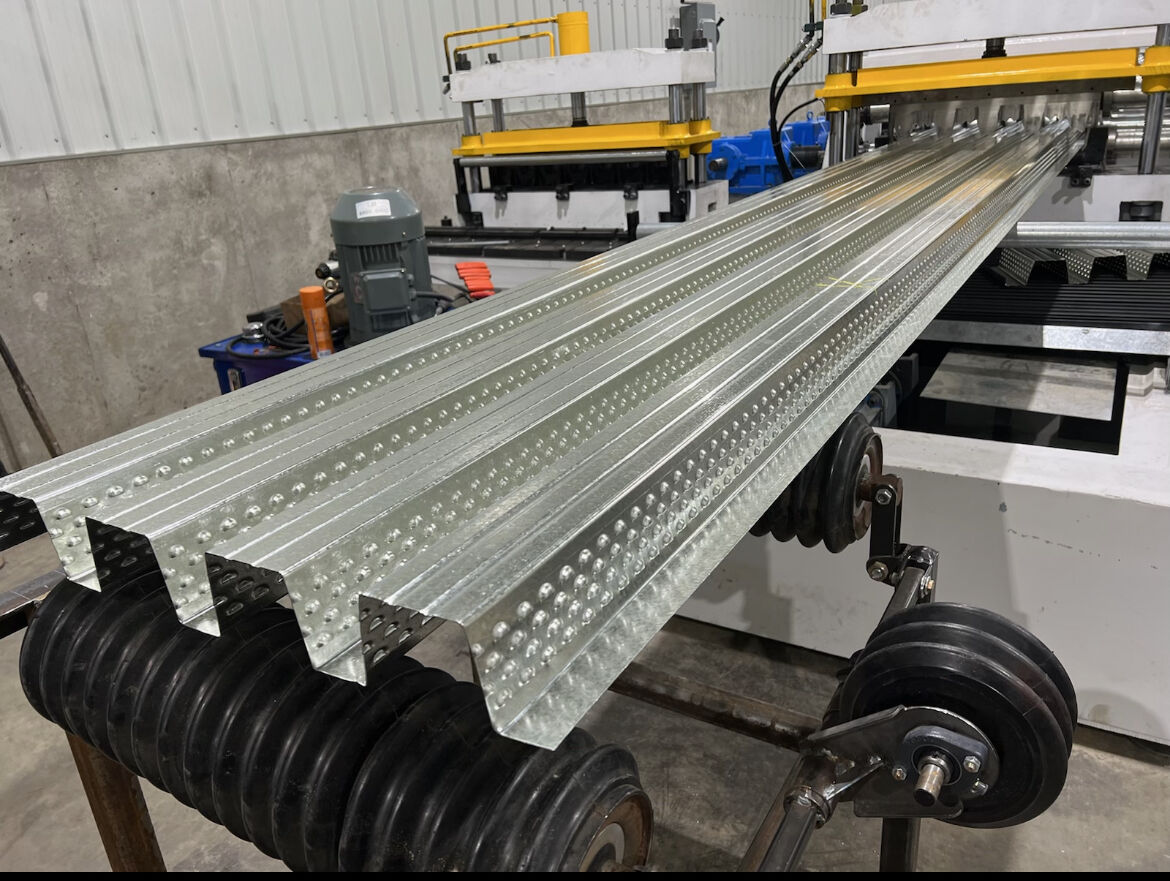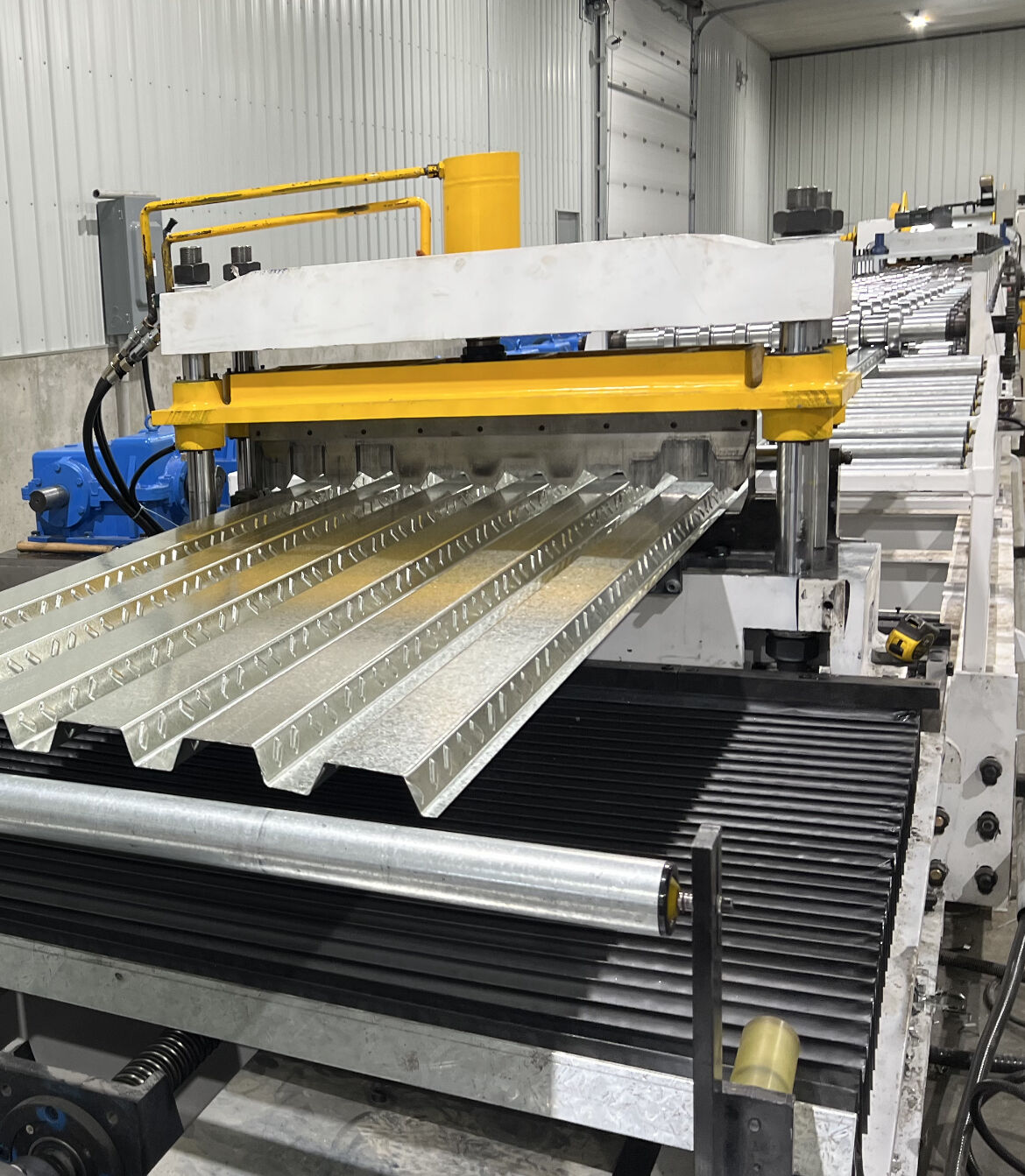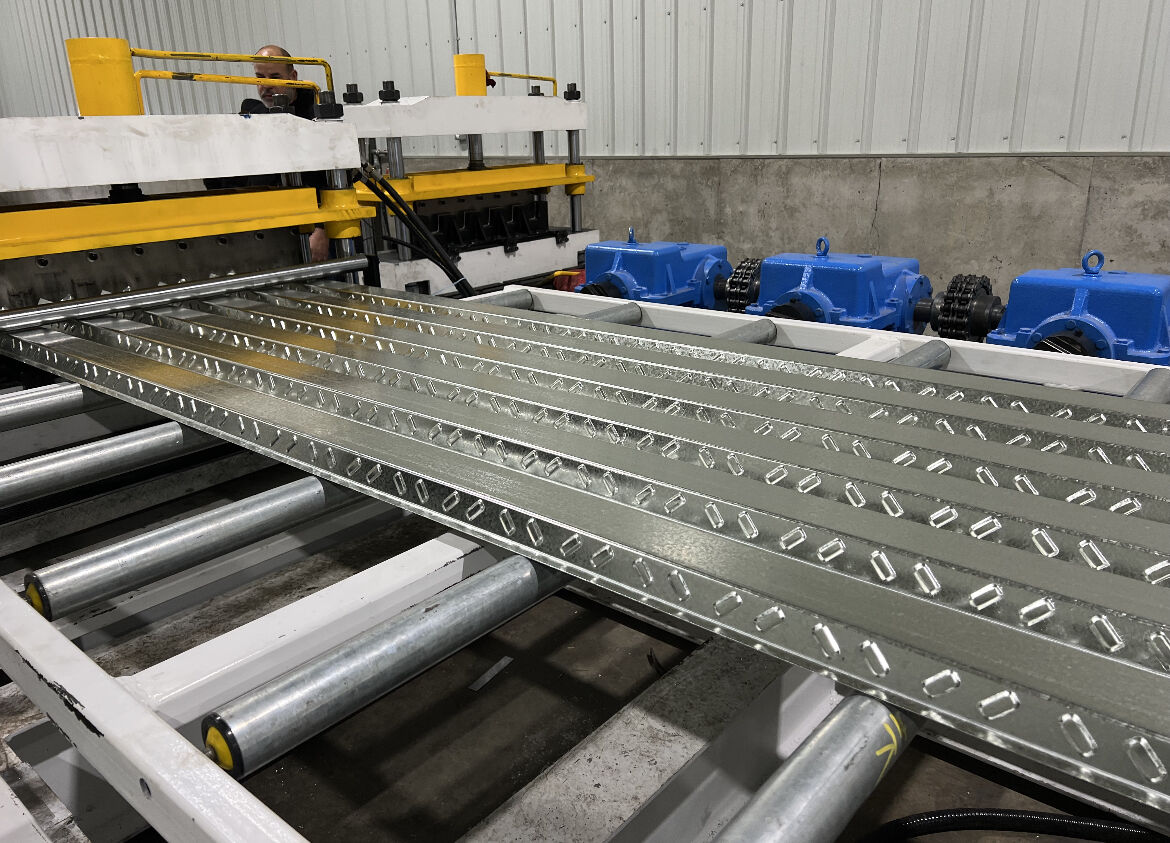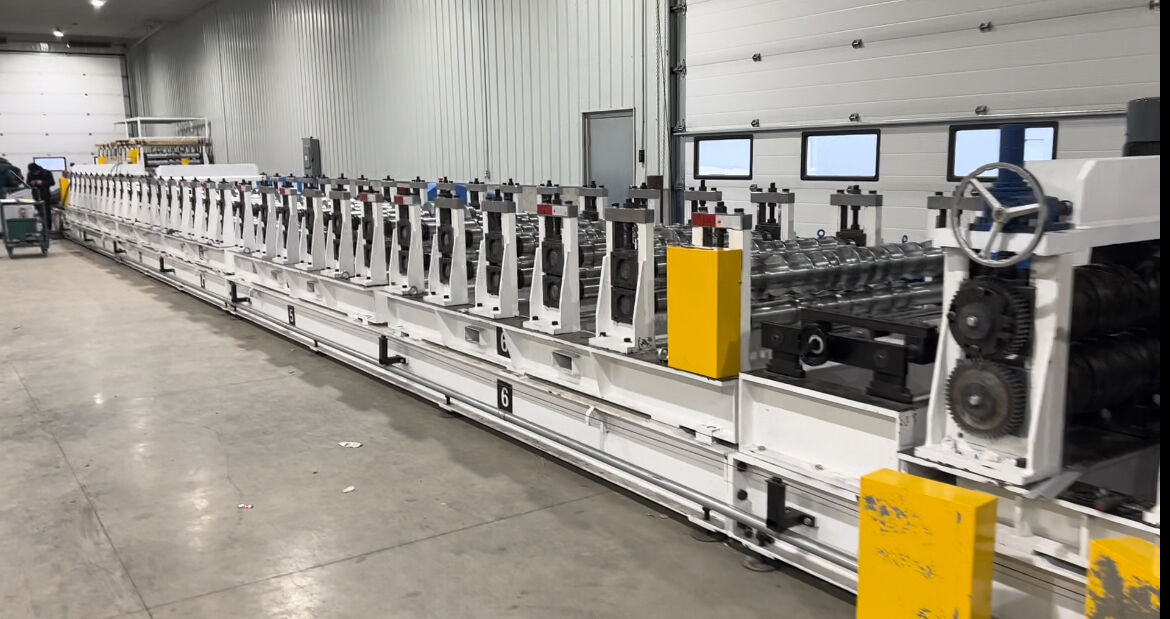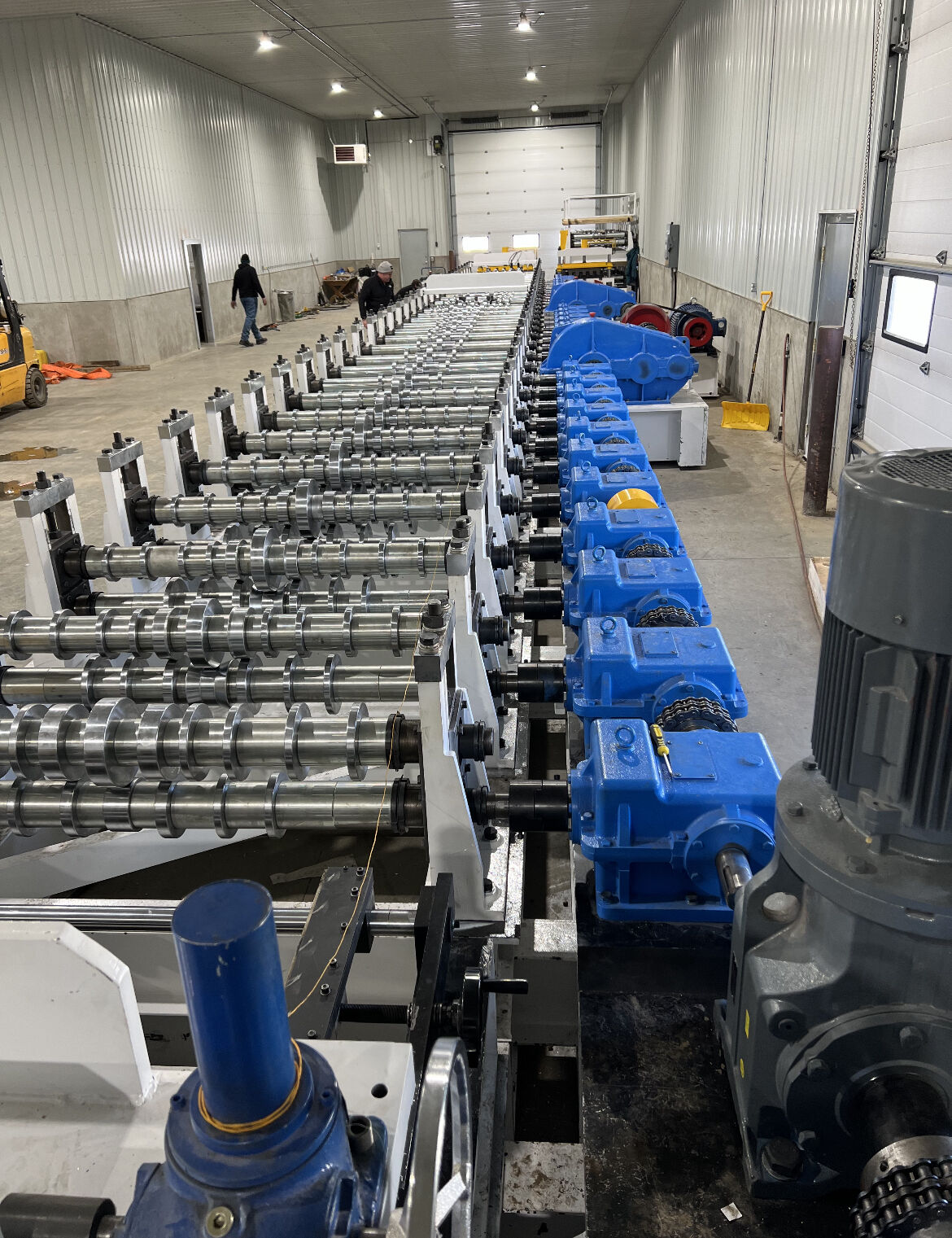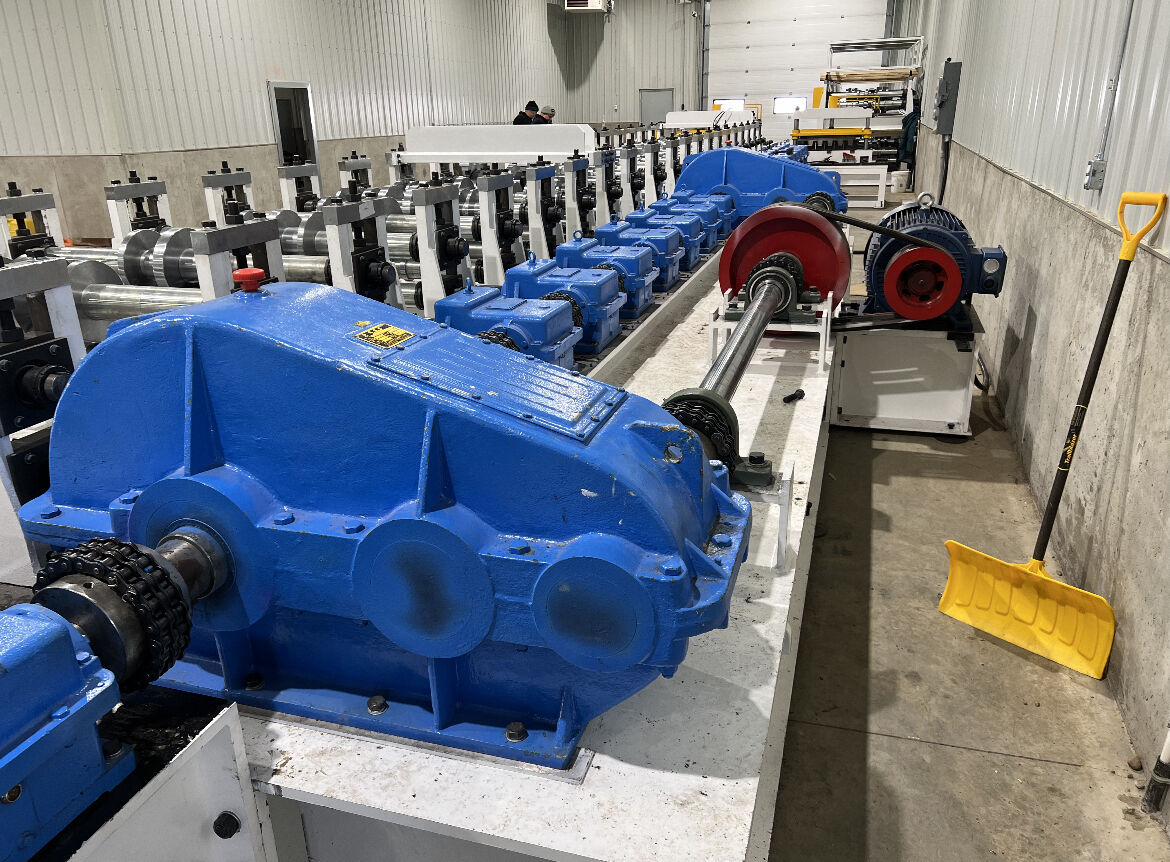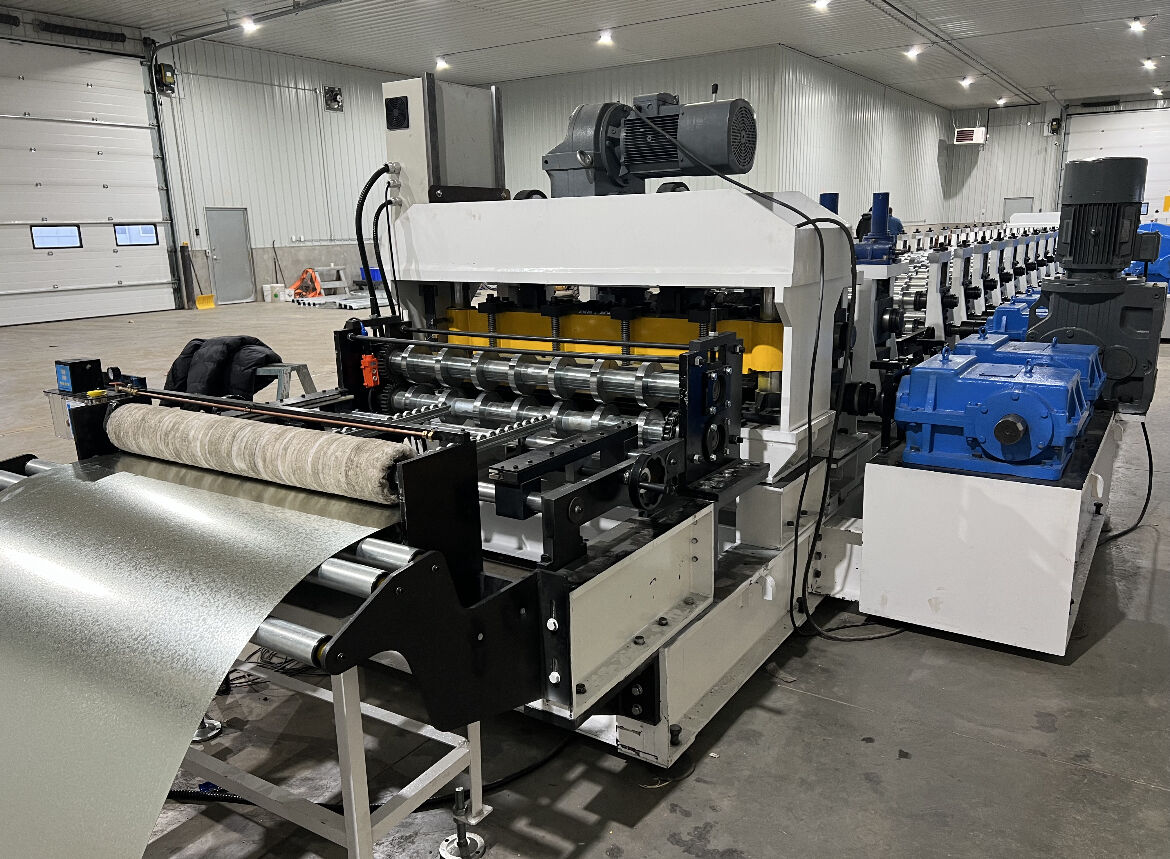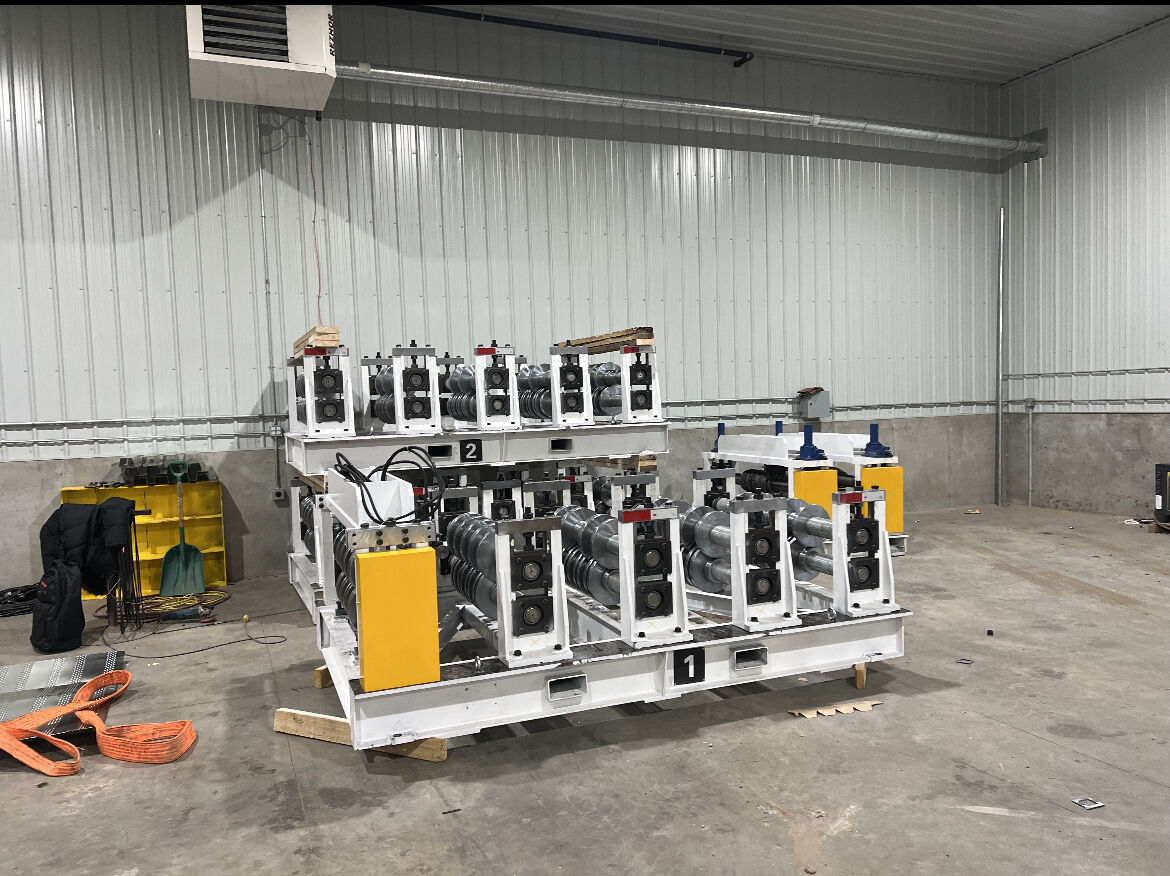Rafted Cassette Rollformer
Get a Quote
Send us a message and we’ll get back to you shortly.
Cassette Steel Deck Roll Forming Machine Specifications
- Footprint 120ft x 15ft
- 20,000lb Uncoiler
- Stands 28 gauges 16 to 22g
- Driven with 28 gearboxes and reducers
- Main motor 65hp 3ph 60hz
- Embosser stations with gear box drive station 25hp motor
- On and off embossing rollers
- Flying Hydralic shear and changing table
- Profiles are b deck 1-1/2" / Q deck 3" 4 ribs
- Coil width 48" +/-
- Computer controls Yasakawa
- Drive Fuji mmi Mitsubishi Plc
- E stops and safety fence
- Total machine weight 100 tons +/-
- 4 inch main shafts and 5 inch embossing shafts
Cassette Steel Deck Roll Forming Machine Description
A cassette steel deck roll forming machine is a specialized piece of equipment used in the construction industry to manufacture steel deck panels. Steel deck panels are commonly used in the construction of buildings, especially for floor and roof systems. These panels provide structural support and serve as a platform for concrete pouring during the construction process.
The term "cassette" in the context of a roll forming machine refers to a modular or interchangeable setup. In a cassette steel deck roll forming machine, you can change the cassette to produce different profiles or sizes of steel deck panels. This flexibility allows manufacturers to adapt to various project requirements without the need for significant reconfiguration of the entire machine.
Here's how a cassette steel deck roll forming machine typically works:
- Material Feeding: The process begins by feeding a coil of steel sheet or coil into the machine. The steel sheet is usually uncoiled and straightened before entering the roll forming section.
- Roll Forming: The heart of the machine is the roll forming section, where the steel sheet passes through a series of rollers. These rollers gradually shape the steel sheet into the desired profile of the steel deck panel. The cassette design allows for easy adjustment to produce different profiles.
- Cutting: After the roll forming process, the continuous steel sheet is cut into individual deck panels of the desired length. This is often done using a flying shear or another cutting mechanism.
- Stacking and Collecting: The finished steel deck panels are then stacked or collected for further processing or transportation to construction sites.
Cassette steel deck roll forming machines are highly automated and can produce large quantities of steel deck panels efficiently. They are known for their precision in forming and cutting, ensuring that the manufactured panels meet the required specifications and quality standards.
These machines are an essential part of the construction industry, contributing to the speed and efficiency of building construction. They come in various sizes and configurations to accommodate different types of steel deck profiles and production capacities, making them a valuable asset for steel deck manufacturers.
Steel Deck Profiles
Steel deck profiles refer to the various shapes and designs of steel decking used in construction for floor and roof systems. These profiles are manufactured using steel sheet material and are designed to provide structural support and serve as a platform for concrete pouring or other flooring materials. Steel deck profiles are widely used in commercial, industrial, and residential construction projects. Here are some common steel deck profiles:
- Type B Deck: Type B deck profiles are commonly used for roof and floor systems. They have a trapezoidal ribbed design that provides strength and stability. The ribs enhance the bonding with concrete, making them suitable for composite floor systems.
- Type N Deck: Type N deck profiles are similar to Type B decks but with narrower ribs. They are often used in situations where reduced weight and cost are desired, such as mezzanine floors and canopies.
- Type A Deck: Type A deck profiles have a narrow, flat surface and are primarily used for roof systems. They provide a smooth surface for roofing materials while offering some structural support.
- Type F Deck: Type F deck profiles have a more intricate design with ribs and valleys. They are often used in applications where a higher load-bearing capacity is required, such as parking garages and industrial buildings.
- Formlok Deck: Formlok deck profiles are composite steel decking systems that have embossed ribs and a flat surface for the concrete slab. They are popular for their strength and durability and are suitable for both roof and floor applications.
- Wide Rib Deck: Wide rib deck profiles have larger, deeper ribs compared to standard profiles. These are used in applications where heavy loads need to be supported, such as warehouses and industrial facilities.
- Acoustic Deck: Acoustic deck profiles are designed to reduce noise transmission between floors. They typically have perforations or additional materials added to dampen sound and vibration.
- Cellular Deck: Cellular deck profiles have a series of voids or cells in their design. They are often used in floor systems to create an efficient combination of strength and reduced weight.
- Dovetail Deck: Dovetail deck profiles have a dovetail-shaped rib pattern that enhances the bond between the steel deck and concrete. They are commonly used in composite floor systems.
- Deep Deck: Deep deck profiles have deeper ribs and can span longer distances, making them suitable for larger open spaces and reducing the need for additional support.
The choice of steel deck profile depends on factors such as the specific structural requirements of the project, the load-bearing capacity needed, span lengths, and other design considerations. Steel deck profiles are typically selected to meet the structural and functional requirements of a building while considering cost-effectiveness and construction efficiency.
